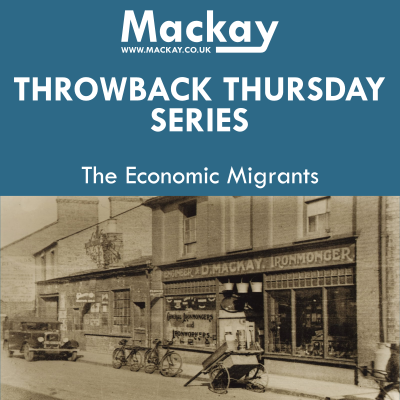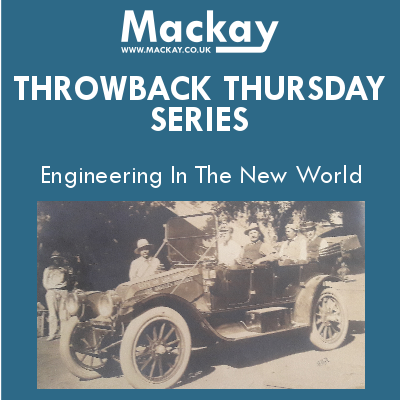Throwback Thursday - The Early Days Of The Firm

This week we are looking back at the early days of the firm and how it got started. As covered in a previous post, The Mackays had completed their slow emigration from the Highlands of Scotland to the city of Cambridge. Having bought out the local Wheelrights it was time for the original Donald and his son Duncan to make their mark. In the extract from his memoirs below, the current Donald Mackay (3rd Generation in the business) looks back at how it all got going:
“Donald and his only son Duncan started the original firm of D. MacKay as a partnership in 1912. His daughter had attended college in Norwich and had become a schoolteacher in Birmingham. Duncan had unfortunately been stricken with a heart problem and died in 1936 at age 52. Old man Donald who had talked about retiring carried on to help hold the firm together. By now the next generation of the family, the writer and his sister, were getting more deeply involved. There was no question of being able to choose a career. The “Old Chapâ€, as the original Donald had become known, wrote a letter to the workshop foreman saying: “Teach that boy what you canâ€. He went on to leave everything to his daughter and put a note on the end of his will: “If that boy is any good give him a jobâ€. She went further and took young Donald and his sister Joan into partnership. Neither had chosen their careers and we’re lucky that the sort of work suited them. Both remained in harness with the firm until the beginning of the new millennium.
With the start of the 1914 war the firm had to rapidly adapt to heating and plumbing work for the military hospitals, one of which had been hastily erected on the site where Cambridge University Library now stands. After that war there was a peaceful period during which time the shape and style of the present MacKay firm was established. For example, a retail shop for engineering tools and equipment was gradually developed over a period before World War II.
As funds became available, money was invested in buying more equipment (mostly second hand). When I started during World War II, the only fairly decent machine was a Dean Smith and Grace centre lathe, which is now in the Museum of Technology. Everything in the workshop was belt driven from an overhead line-shaft. The shaft was driven by a Blackstone oil engine, which had replaced a very ancient gas engine. The gas engine had at the time been retained as a standby and was brought into use occasionally during World War II when diesel oil supplies became difficult. The line-shaft also powered a large rotary fan to supply air blast to the five forges, which were always very busy.â€
And so the stage was set
It was during these early years that the general strategy for diversifying into different areas and markets started. Rather than a conscious decision it was all based on listening to the customer and getting a sense of what they might find useful. This way of doing business has served the company well as when one area was struggling it always seems that another was thriving and is a key reason why we continue to trade today.
Thursday 29th June 2017




